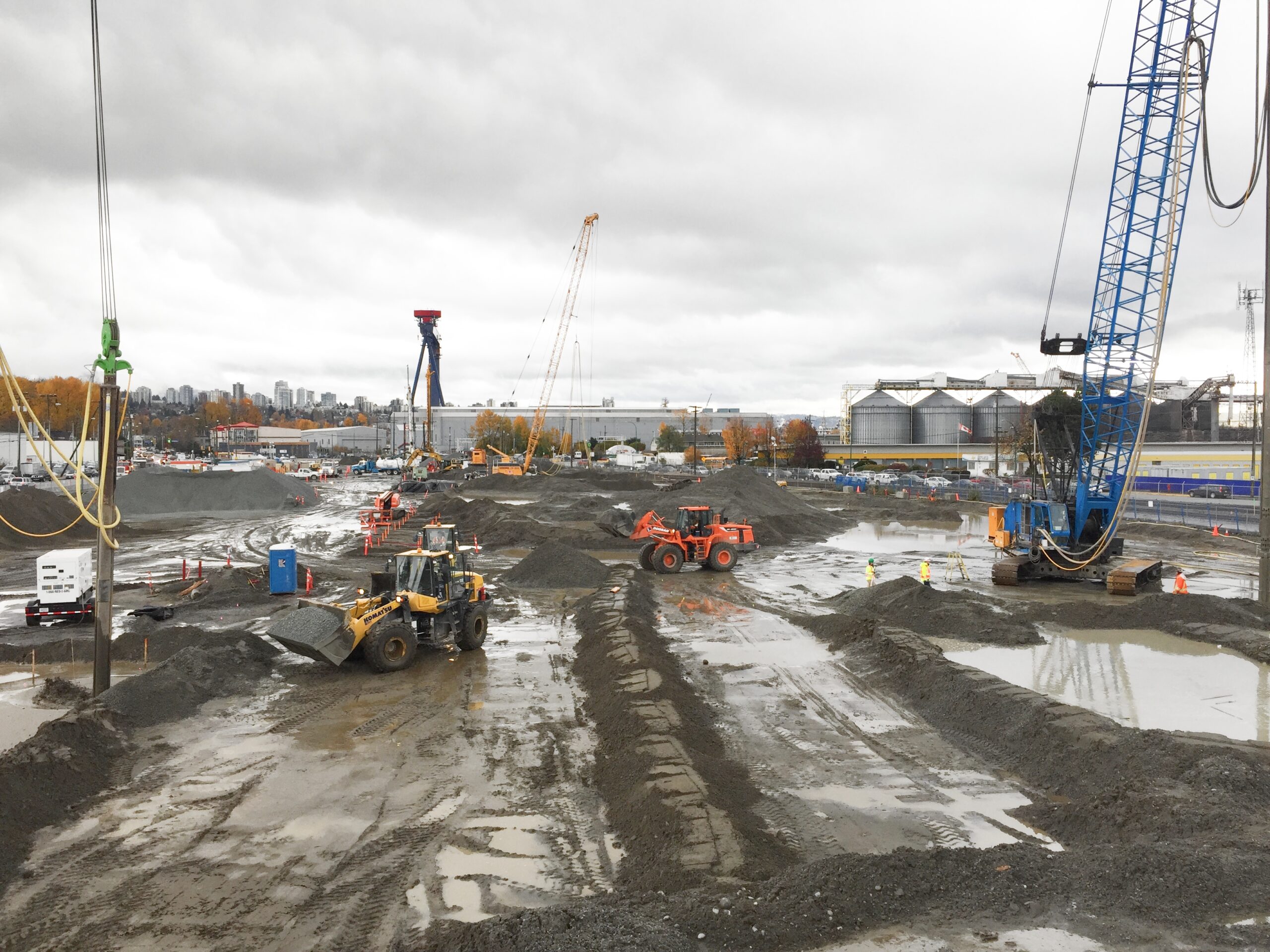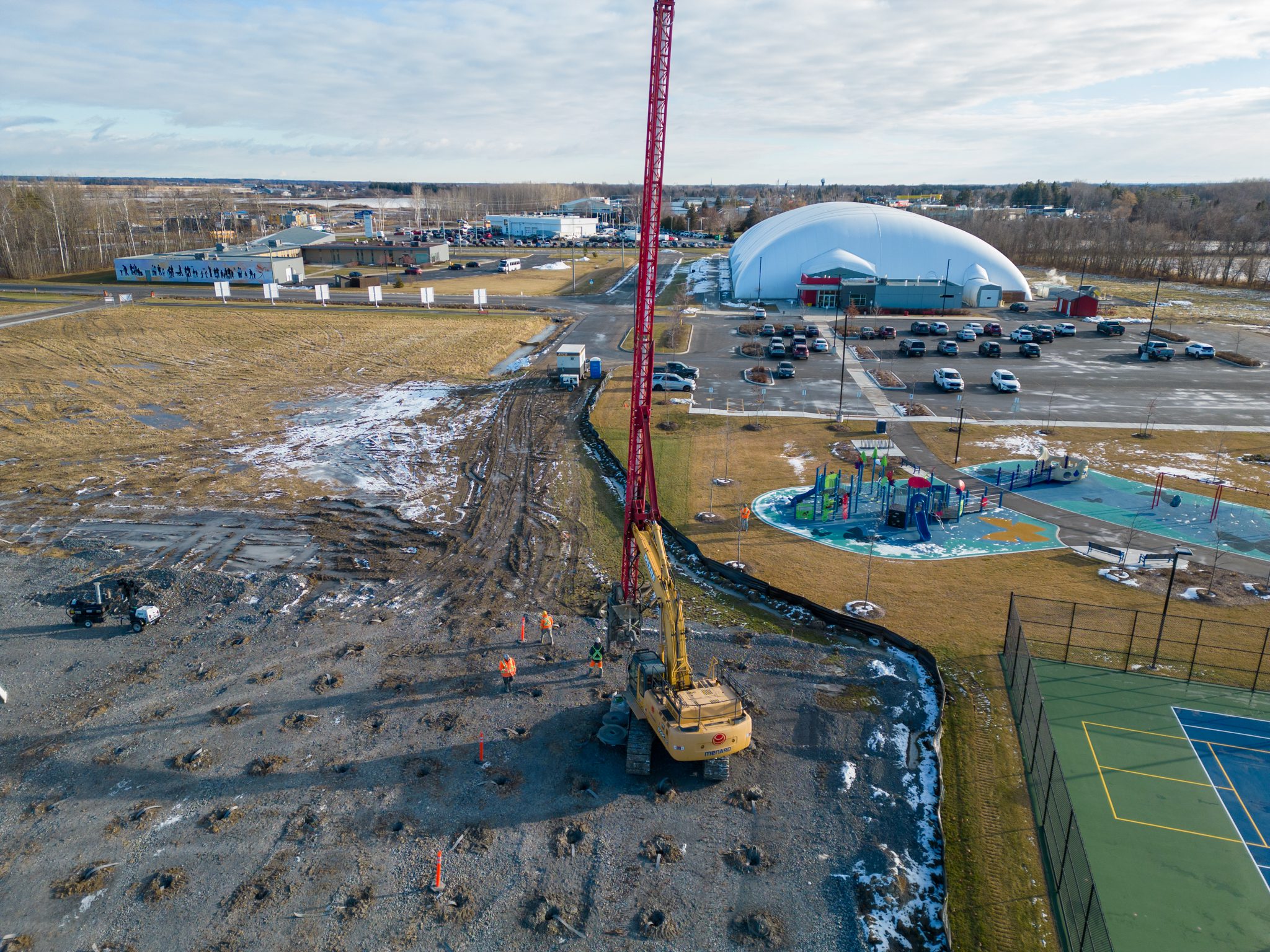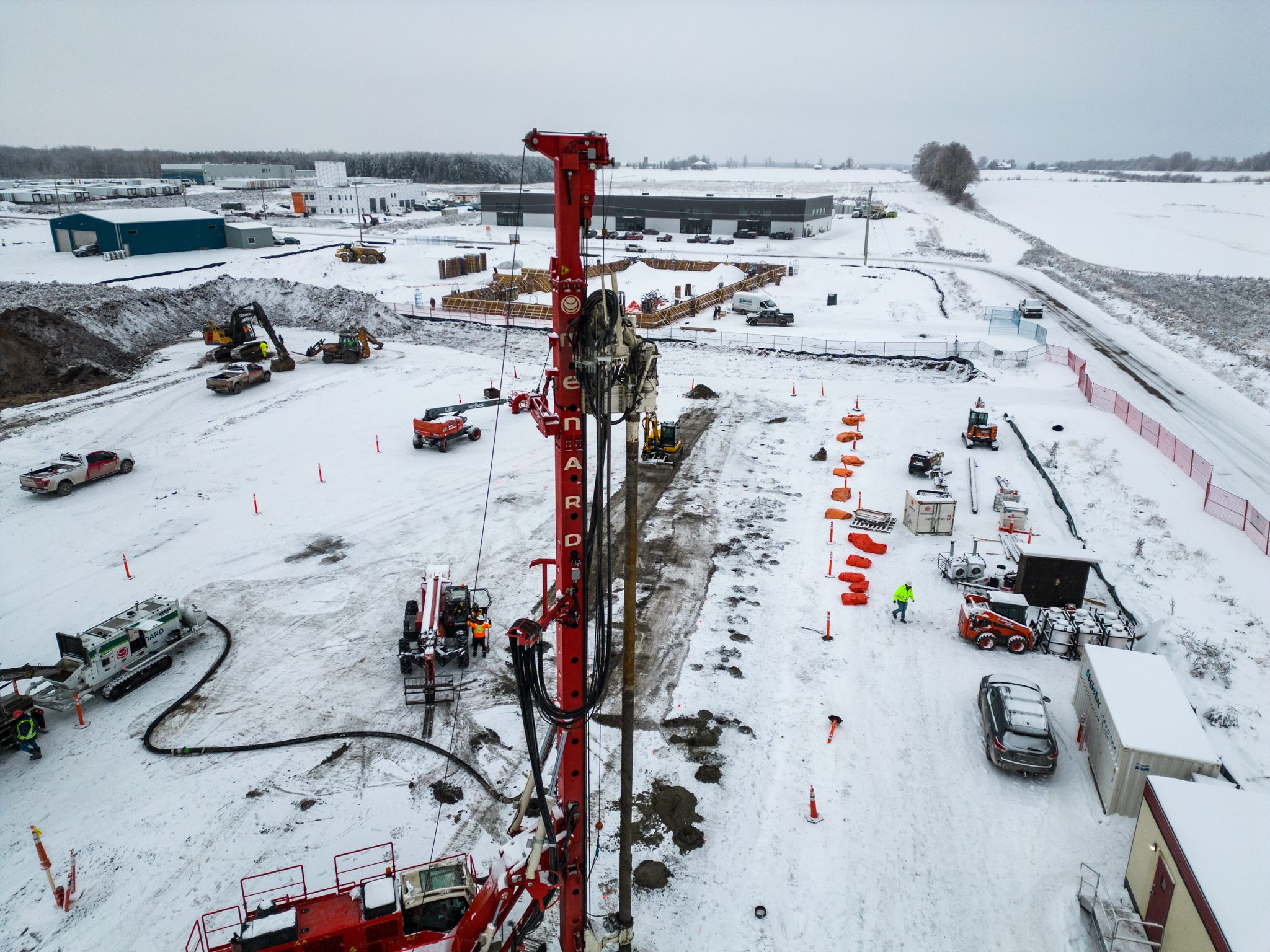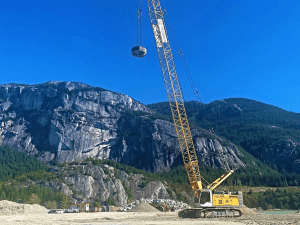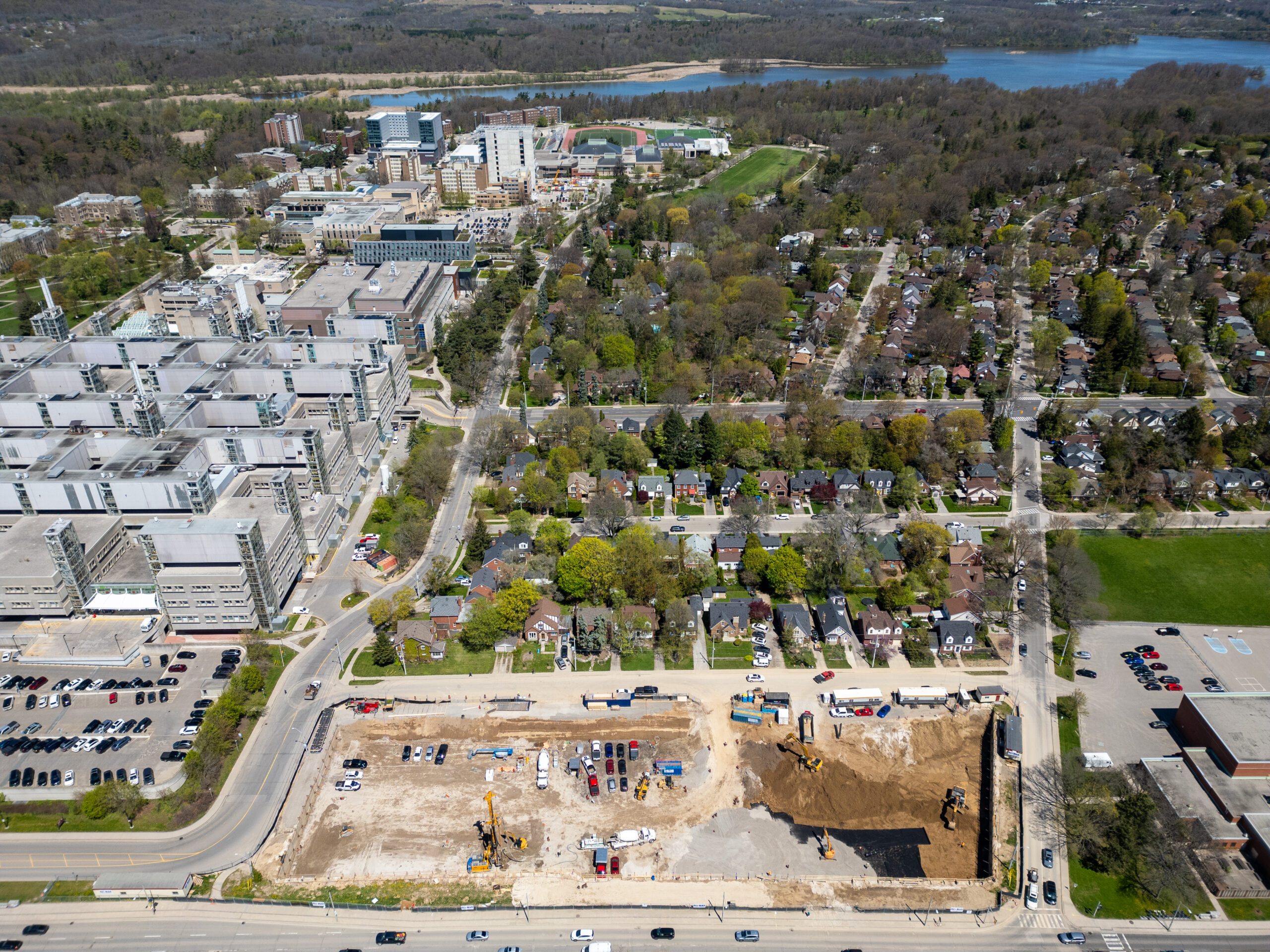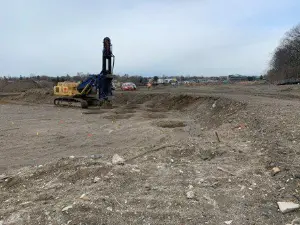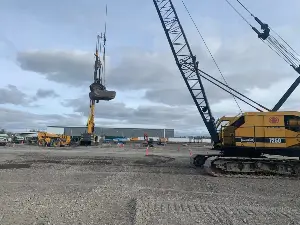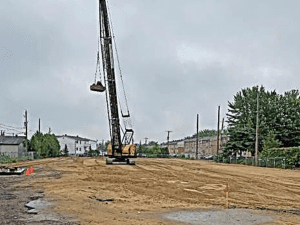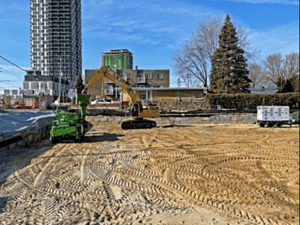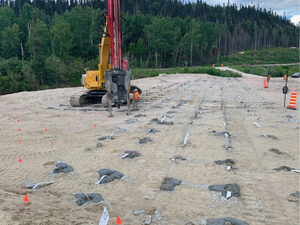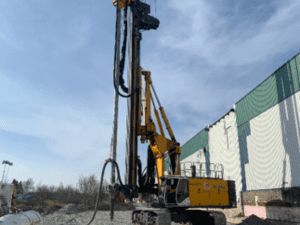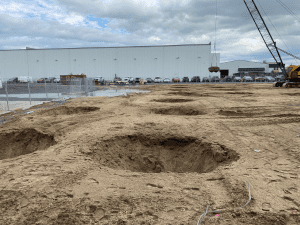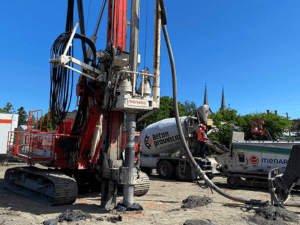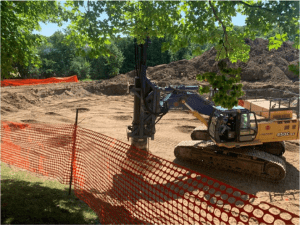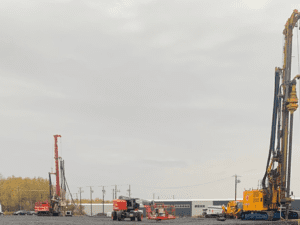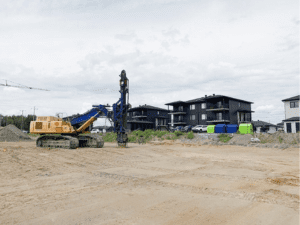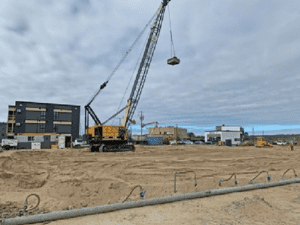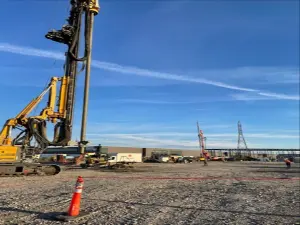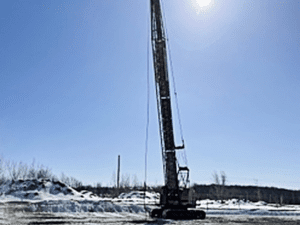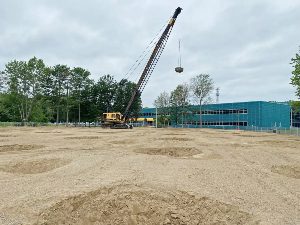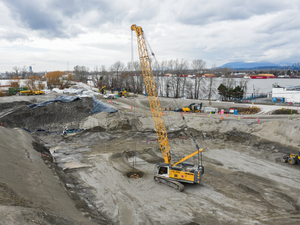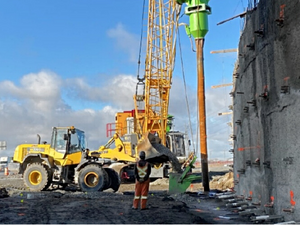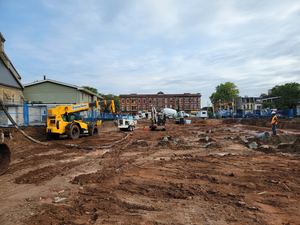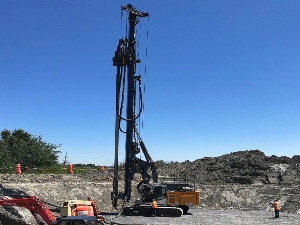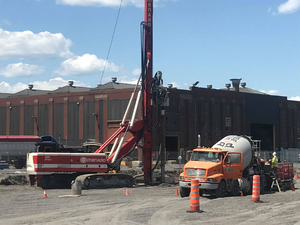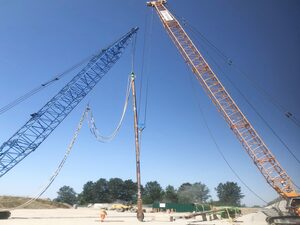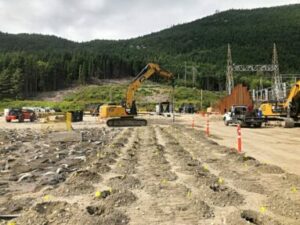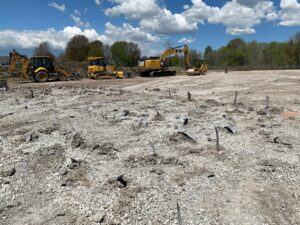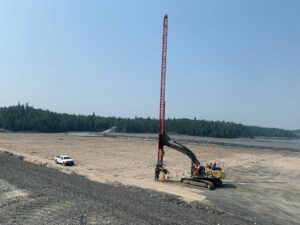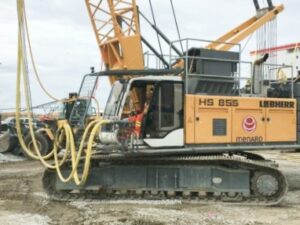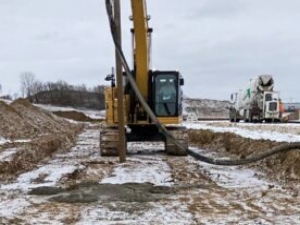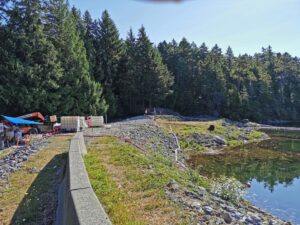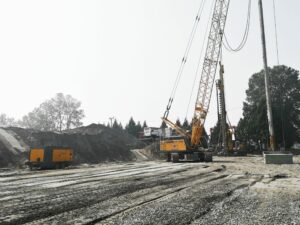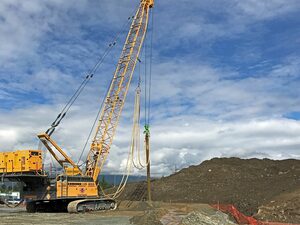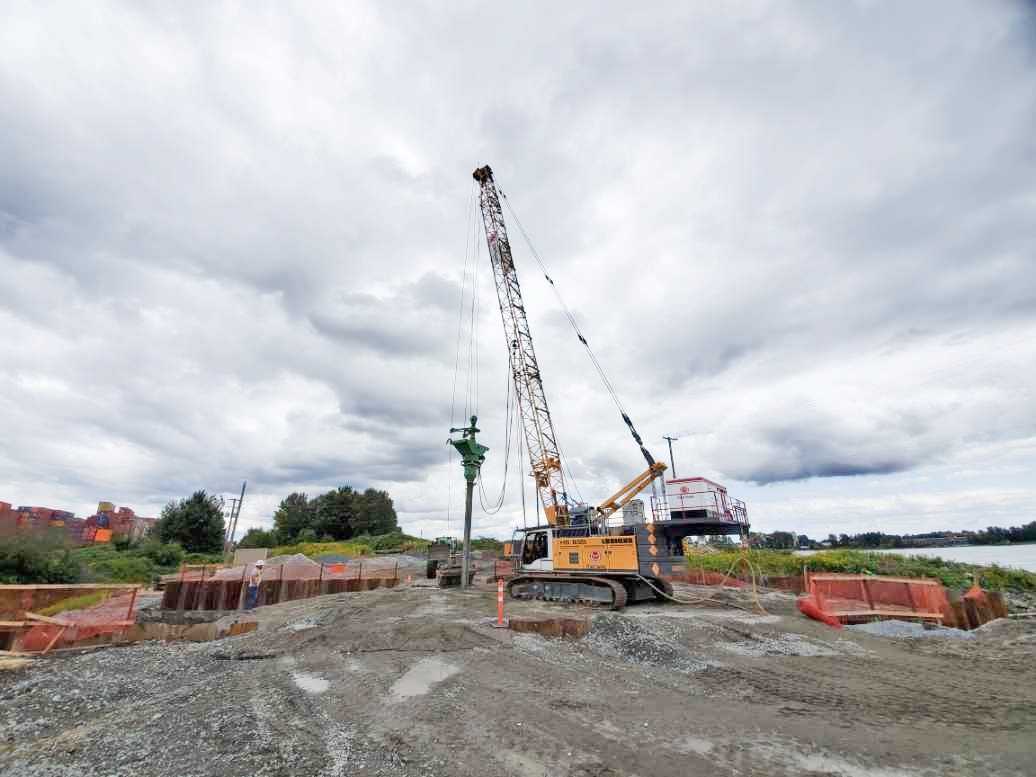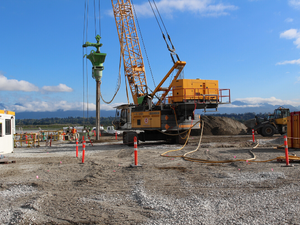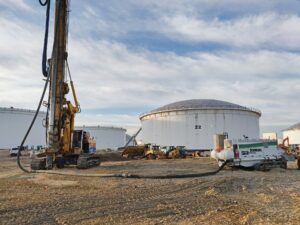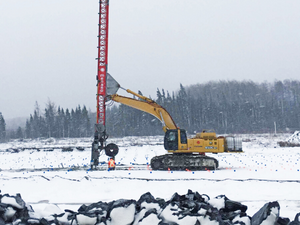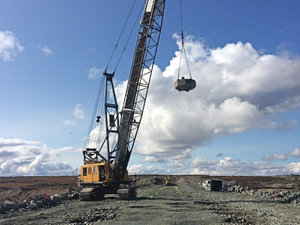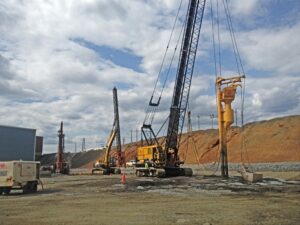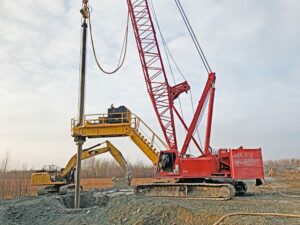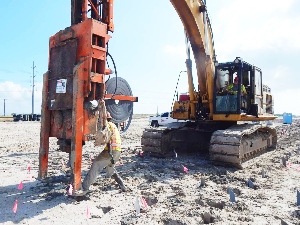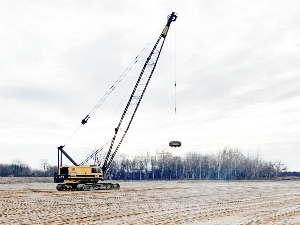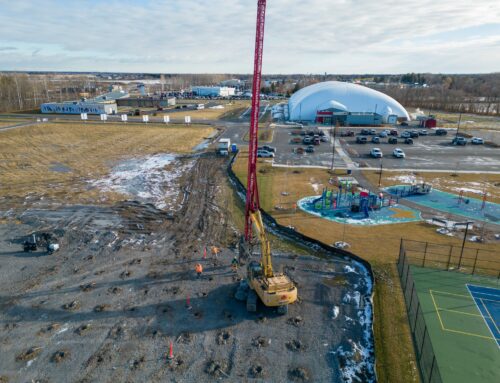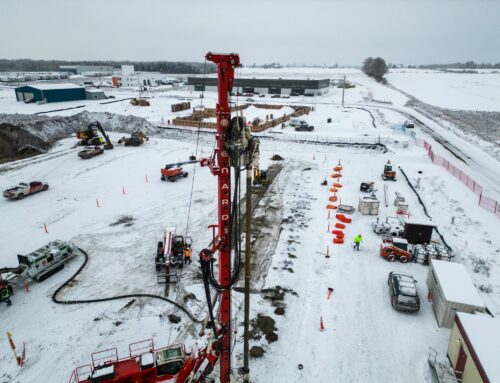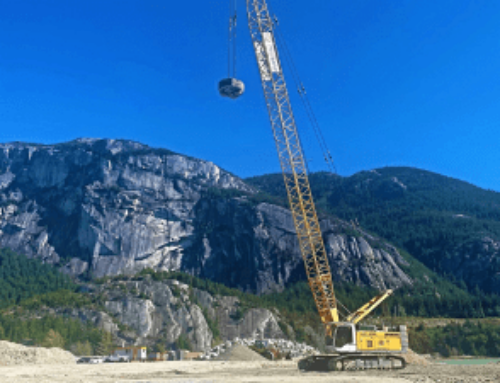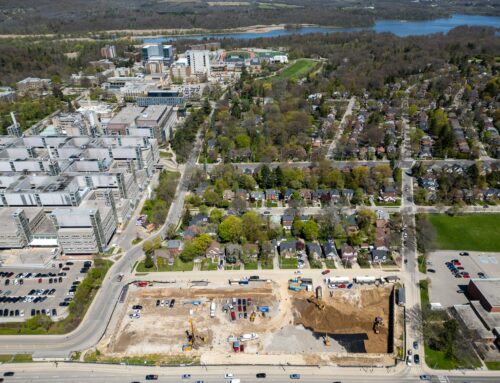Selected Technique:
Stone Columns with Vibroflot
Treatment Area:
1400m²
Project Depth:
21m
The City of Richmond was upgrading its No.7 Road Drainage Pump Station and required ground improvement to limit the post-construction settlement of the structure after a seismic event.
Ground Conditions
The site’s subsurface stratigraphy consisted of the following:
• Approx. 9 m of Silty Clay;
• Underlain by 14 m of Silty Sand susceptible to liquefaction.
The groundwater table is observed to be 2.5-3.0m deep.
Menard Canada Solution
Vibro Replacement Stone Column densification was required below the future pump station in order to prevent liquefaction in the event of an earthquake. Menard utilized dry-bottom-feed stone column installation techniques to protect the nearby water body from spoil or runoff. This was especially important since the treatment area extended into the waterbody upstream. Stone columns were installed to a maximum depth of 21m using a triangular grid pattern to meet the specified CPT tip resistance design goals. The grid pattern was developed to accommodate the previously installed sheet piles near the treatment area.
The sheet piles were installed along the boundary of the cofferdam. For the areas outside the cofferdam, Menard exercised extra care while installing the Stone Columns due to the sudden drop in the elevation of the working platform on the other side of the sheet pile.
After construction, the treatment area was validated using Cone Penetration Tests (CPTs). Results were then compared with the tip resistance specifications laid out by the Engineer to ensure that the ground improvement met design goals.

